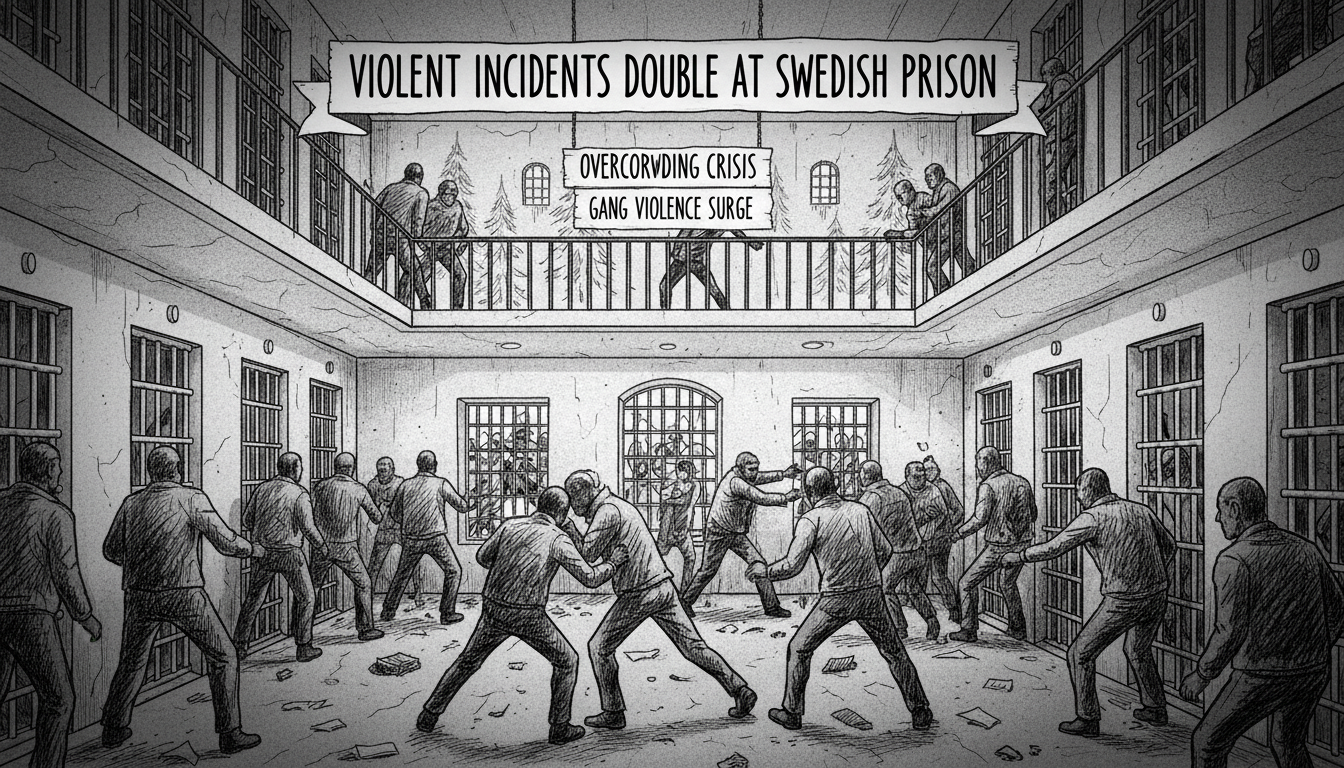Violence has surged at Saltvik prison in northern Sweden, with reported incidents doubling in recent months. Prison authorities confirm 46 total incidents since September, including 24 violent clashes between inmates. This represents a sharp increase from previous periods.
The prison's special tactical unit intervened last week to control a minor riot. Inmates destroyed doors, windows, and sinks during the disturbance. A prison worker said the unrest stemmed from widespread dissatisfaction among the incarcerated population.
Just one week earlier, ten prisoners participated in a bloody fight where they used a frying pan as a weapon. This summer saw another assault where inmates wielded a metal sheet. The pattern of escalating violence points to deeper systemic issues within Sweden's correctional facilities.
Marie Larsson, a prison inspector, directly links the increase in incidents to prison overcrowding and growing gang connections among inmates. What happens in society follows prisoners inside the institution, she explained in a statement to officials.
Peter Hemström, a union leader, describes increasingly difficult daily conditions with understimulated prisoners. Saltvik ranks worst in Sweden for prisoner employment programs, he said. The prison doubles its occupancy but applies the brakes on expanding work opportunities. This wears down the clients.
Statistics from the prison's reporting system show increased violence between inmates. More prisoners and improved staff reporting practices contribute to the higher numbers. A system update in 2022 makes direct comparisons with earlier periods challenging.
The situation at Saltvik reflects broader challenges in Sweden's prison system. Overcrowding has become chronic while rehabilitation programs struggle to keep pace. International observers have noted similar patterns in other Nordic countries facing increased gang-related crime.
Prison violence often correlates with limited meaningful activities and cramped living conditions. Sweden traditionally emphasized rehabilitation over pure punishment, but current pressures test this approach. The Saltvik case shows what happens when institutions cannot provide basic programming and space.
International readers should understand that Nordic prisons typically maintain higher standards than many global systems. Yet even these well-funded institutions face strain from organized crime and capacity issues. The Saltvik situation demonstrates how quickly conditions can deteriorate when systems become overloaded.
What happens next depends on whether authorities can address both immediate security concerns and underlying structural problems. More guards might contain violence temporarily, but only comprehensive reforms addressing overcrowding and prisoner idleness will create lasting change.

